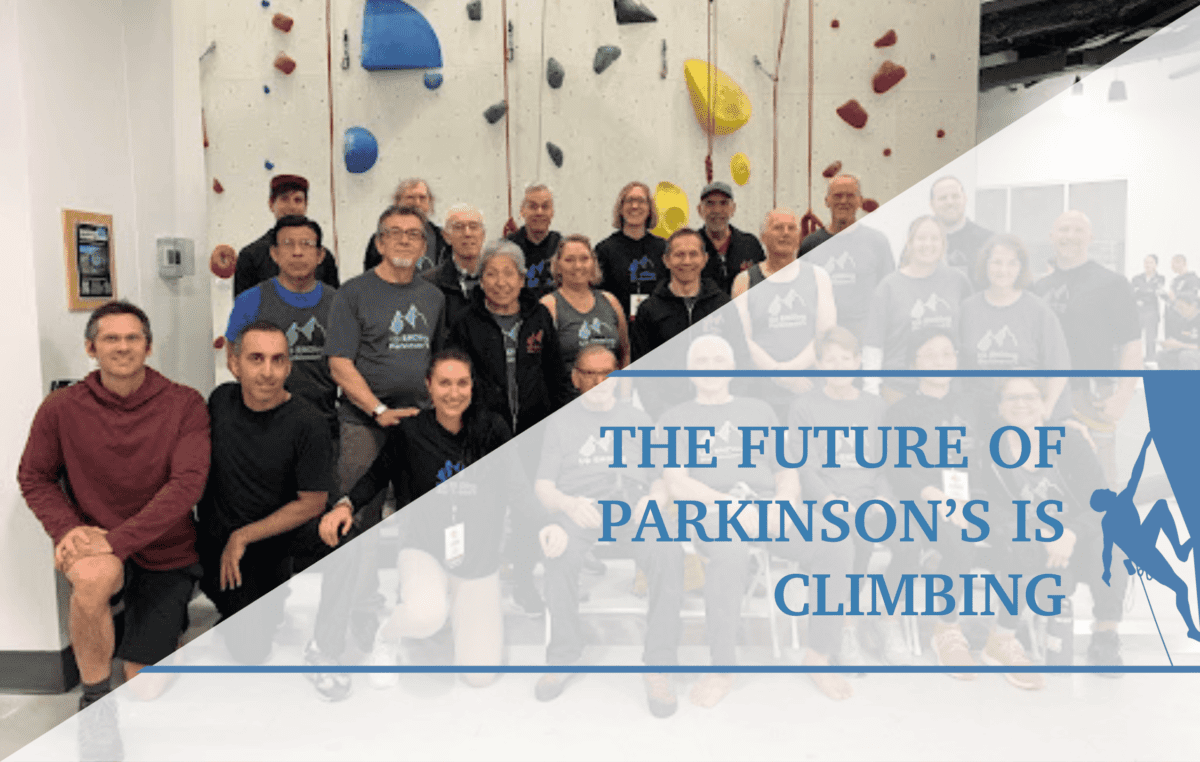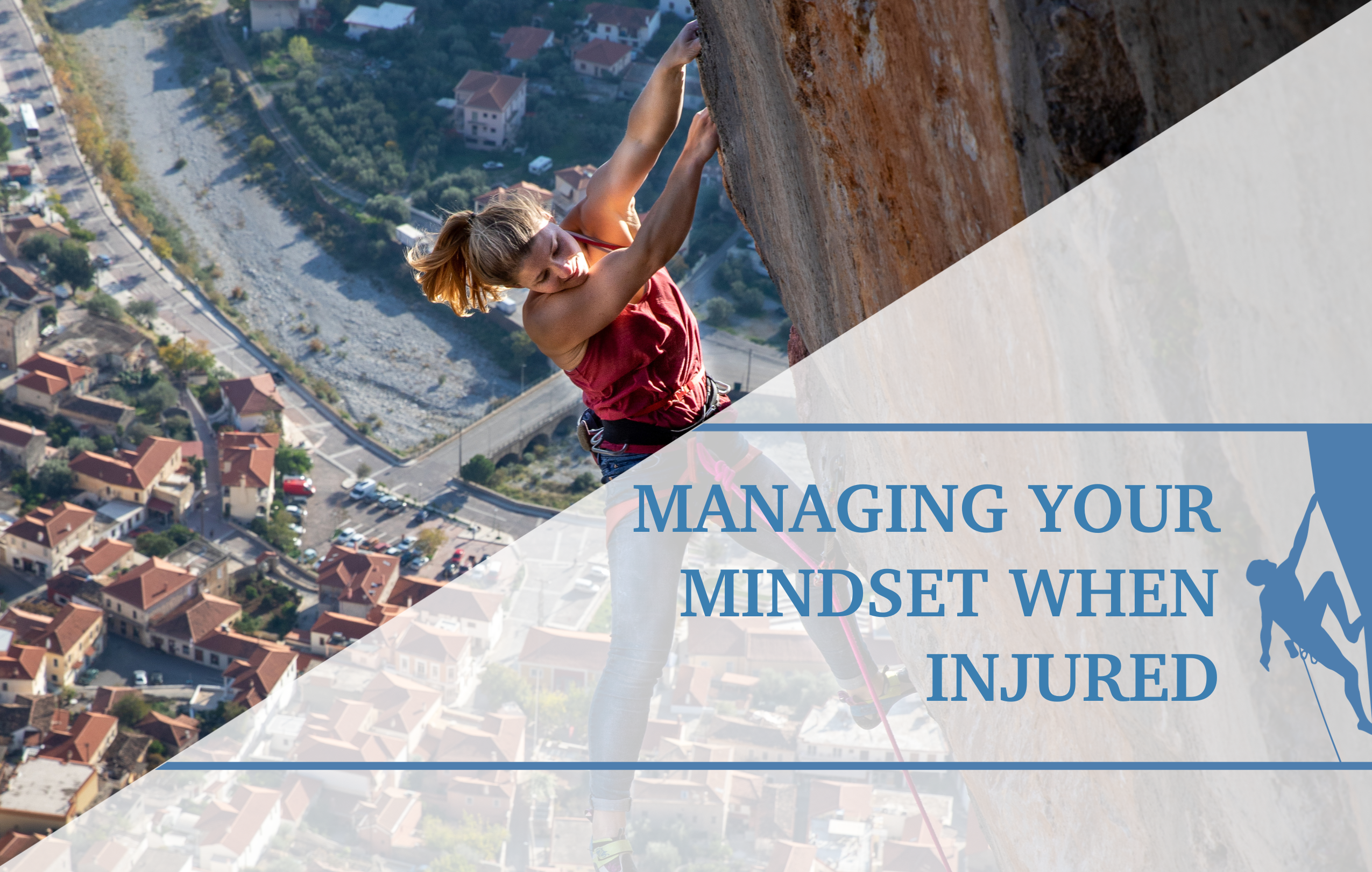Balance and Stability for Climbers
Most climbers would agree that improving their footwork is necessary to send more. The moment your feet leave the wall generally indicates you are either: dyno-ing, your feet have cut and your climb has now turned into a campus, or you are falling. In regards to your feet, you usually fall due to a loss of balance; be it from slipping or just not being able to hold on.
A climber’s first point of contact on a foot hold is generally their big toe with their heel down. From there, we raise our heels to maximize the amount of surface area our shoes come in contact with. Throughout this movement, we continue to push our foot into the foothold; maintaining pressure to maintain friction and keep ourselves from falling off. Be it toeing onto a small pocket or pressing down on that slab, our footwork is a critical aspect of keeping ourselves on the wall; a small detail that will either bring about some rest or increase our pump.
Balance is comprised from input from your vision, input from your inner ear (vestibular), and input from receptors in your body (proprioception). Research has shown that strength of gluteus medius and of the muscles of the lower leg play a large role in the body’s ability to determine its position in space. These muscles help increase stability when your foot is on a hold and help load and push off. More importantly they decrease how often you get Elvis Presley legs and your chances of getting hurt.
Below are a few exercises that a climber would benefit from doing to improve the strength of the muscles in their foot and ankle to improve their footwork. Don’t skip leg day.
Calf Raises with Ball
Muscles Involved: Gastroc, posterior tibialis
Why: Improve push off and weight shifting onto footholds. Avoid the cheese grate on slabs
- Squeeze a ball above your ankles
- Raise your heels up making sure to keep weight through your big toe
- Lower your heels down
Easy? Lower slowly (5-10 seconds, add weight too!)
Still easy? Try one leg!
Insanity mode! Do it on the slab wall!


Ankle Stability Lunge Matrix
Muscles involved: Peroneus longus, gluteus medius
Why: Improve toeing in for turns, pivots, and flags
- Place a Theraband underneath the knuckle of your big toe
- Pull up with your opposite hand
- Lunge backwards
- DO NOT CLAW YOUR TOES!!! You are not a velociraptor!
Easy? Try flagging.
Still easy? Now add a non-compliant surface such as an Airex pad or Bosu ball. Style points if you do it on stability ball.
Really? Fine add some weight
Insanity mode! Eyes shut!
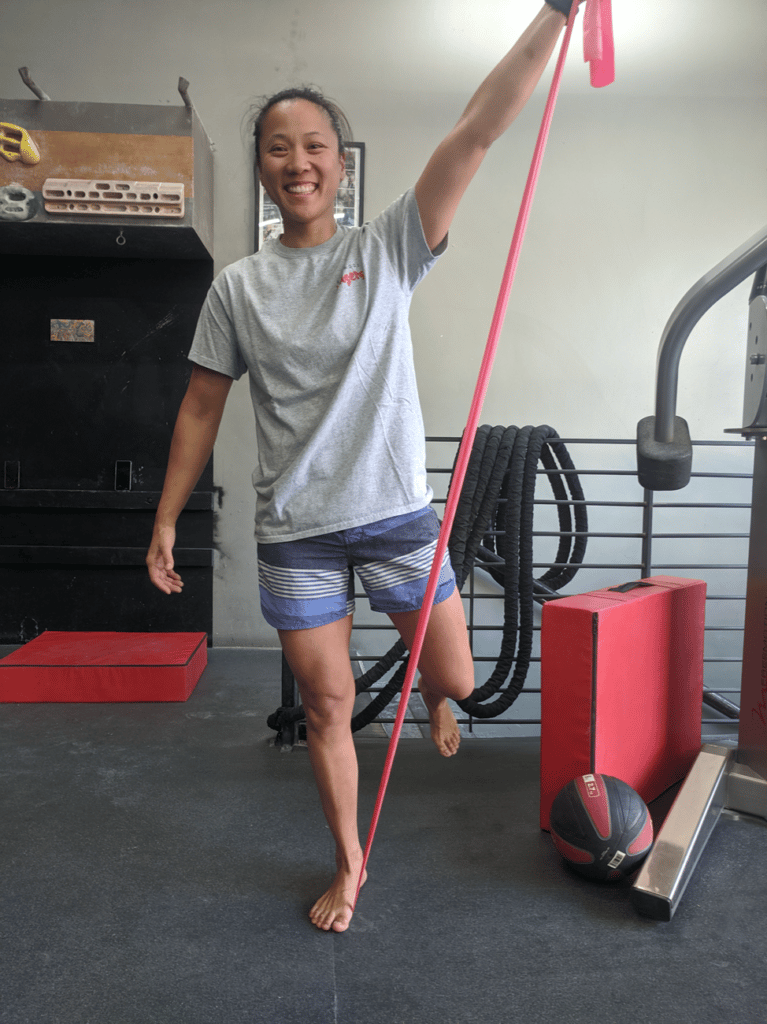
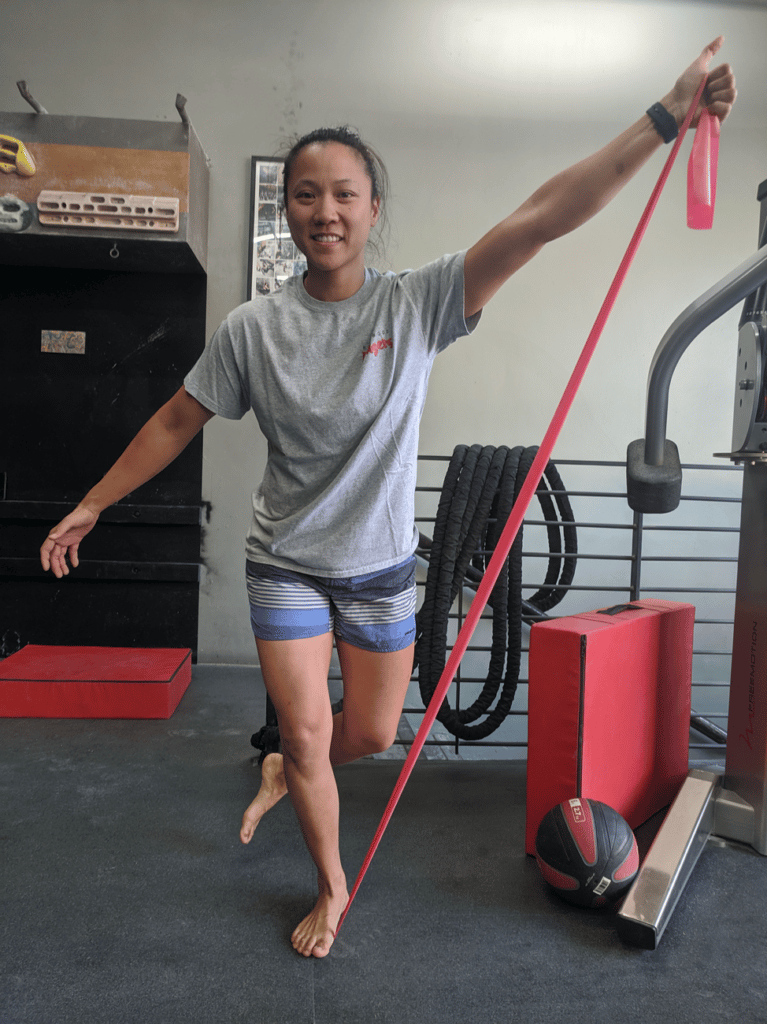
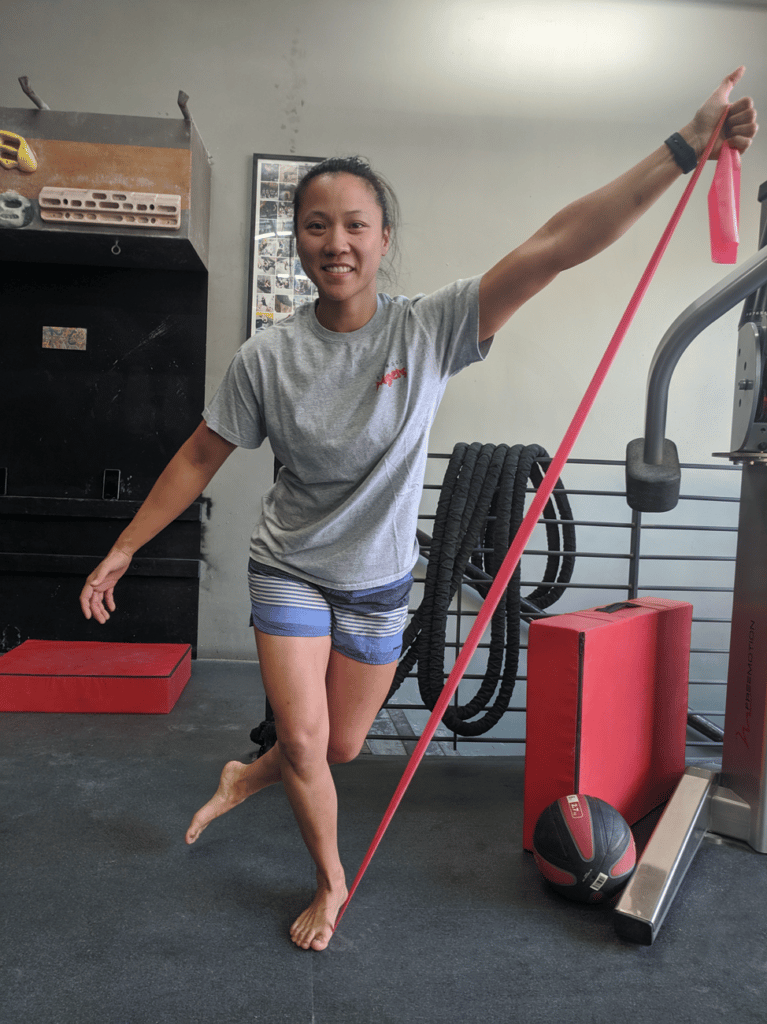
Unstable Progression
Increase the level of challenge by adding an unstable surface such as an Airex, Dynadisc or Bosu ball
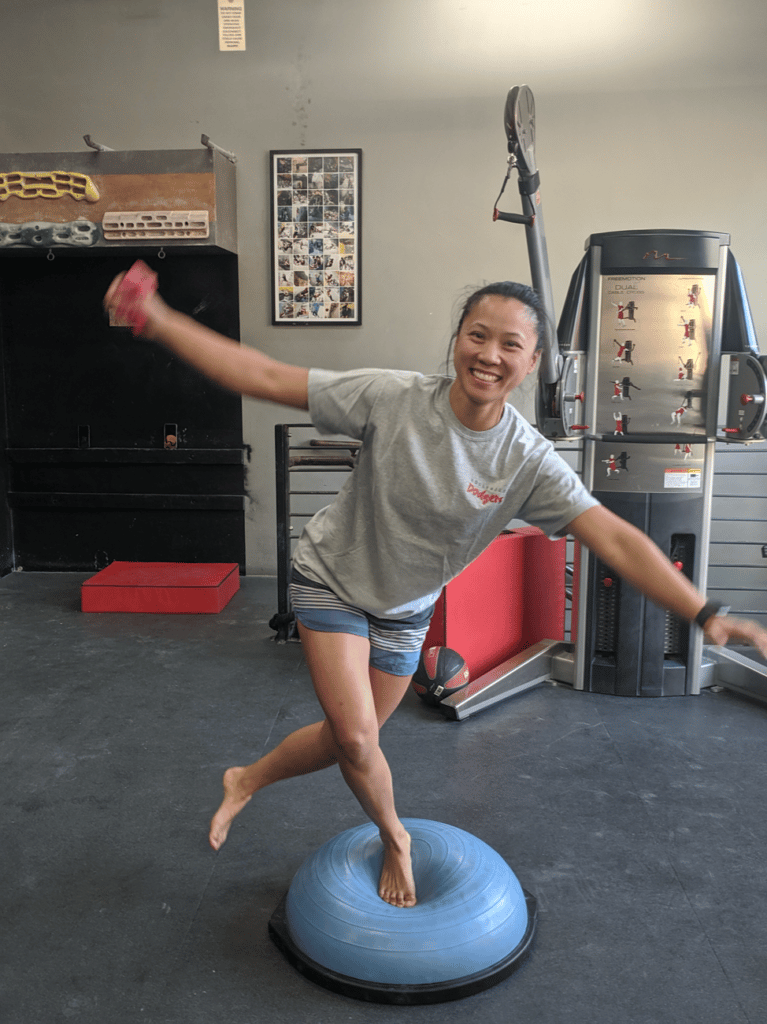
Unstable surface t surfaces pictured below from left to right: Airex, Dynadisc and Bosu Ball.
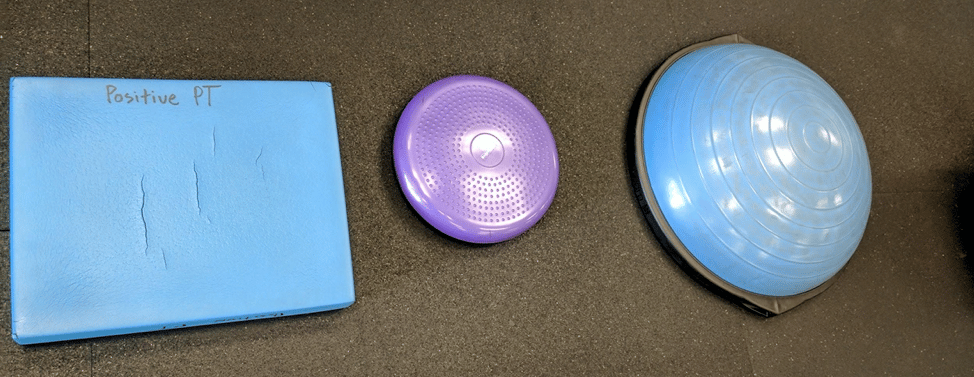
References
- Aman JE, Elangovan N, Yeh I-L, Konczak Jã¼. The effectiveness of proprioceptive training for improving motor function: a systematic review. Frontiers in Human Neuroscience. 2015;8. doi:10.3389/fnhum.2014.01075.
- Aman JE, Elangovan N, Yeh I-L, Konczak J. The effectiveness of proprioceptive training for improving motor function: a systematic review. Frontiers in Human Neuroscience. 2015;8. doi:10.3389/fnhum.2014.01075.
- Han J, Waddington G, Anson J, Adams R. Level of competitive success achieved by elite athletes and multi-joint proprioceptive ability. Journal of Science and Medicine in Sport. 2015;18(1):77-81. doi:10.1016/j.jsams.2013.11.013.
- Hanci E, Sekir U, Gur H, Akova B. Eccentric Training Improves Ankle Evertor and Dorsiflexor Strength and Proprioception in Functionally Unstable Ankles: American Journal of Physical Medicine & Rehabilitation. 2016;95(6):448-458. doi:10.1097/PHM.0000000000000421.
- Harput G, Soylu AR, Ertan H, Ergun N. Activation of Selected Ankle Muscles During Exercises Performed on Rigid and Compliant Balance Platforms. Journal of Orthopaedic & Sports Physical Therapy. 2013;43(8):555-559. doi:10.2519/jospt.2013.4456.
- Killian RB, Nishimoto GS, Page JC. Foot and ankle injuries related to rock climbing. The role of footwear. Journal of the American Podiatric Medical Association. 1998;88(8):365-374.
- Kulig K, Burnfield JM, Requejo SM, Sperry M, Terk M. Selective Activation of Tibialis Posterior: Evaluation by Magnetic Resonance Imaging: Medicine & Science in Sports & Exercise. May 2004:862-867. doi:10.1249/01.MSS.0000126385.12402.2E.
- Postle K, Pak D, Smith TO. Effectiveness of proprioceptive exercises for ankle ligament injury in adults: A systematic literature and meta-analysis. Manual Therapy. 2012;17(4):285-291. doi:10.1016/j.math.2012.02.016.
- Schiffl V. Feet injuries in rock climbers. World Journal of Orthopedics. 2013;4(4):218. doi:10.5312/wjo.v4.i4.218.
- Schiftan GS, Ross LA, Hahne AJ. The effectiveness of proprioceptive training in preventing ankle sprains in sporting populations: A systematic review and meta-analysis. Journal of Science and Medicine in Sport. 2015;18(3):238-244. doi:10.1016/j.jsams.2014.04.005.
Author Bio
Alex Hoang, PT, DPT
Board Certified Clinical Specialist in Orthopaedic Physical Therapy (OCS)

Alex is a physical therapist who can be found at a local climbing gym helping climbers get back on the wall and sending. He is an avid rock climber who enjoys bouldering and sport climbing. This season he will be exploring the wonders of traditional climbing.
Special thanks to Blair Chang, PT, DPT, OCS for modeling these photos! Los Angeles climbers can find her at @thefixphysicaltherapy
- Disclaimer – The content here is designed for information & education purposes only and the content is not intended for medical advice.


